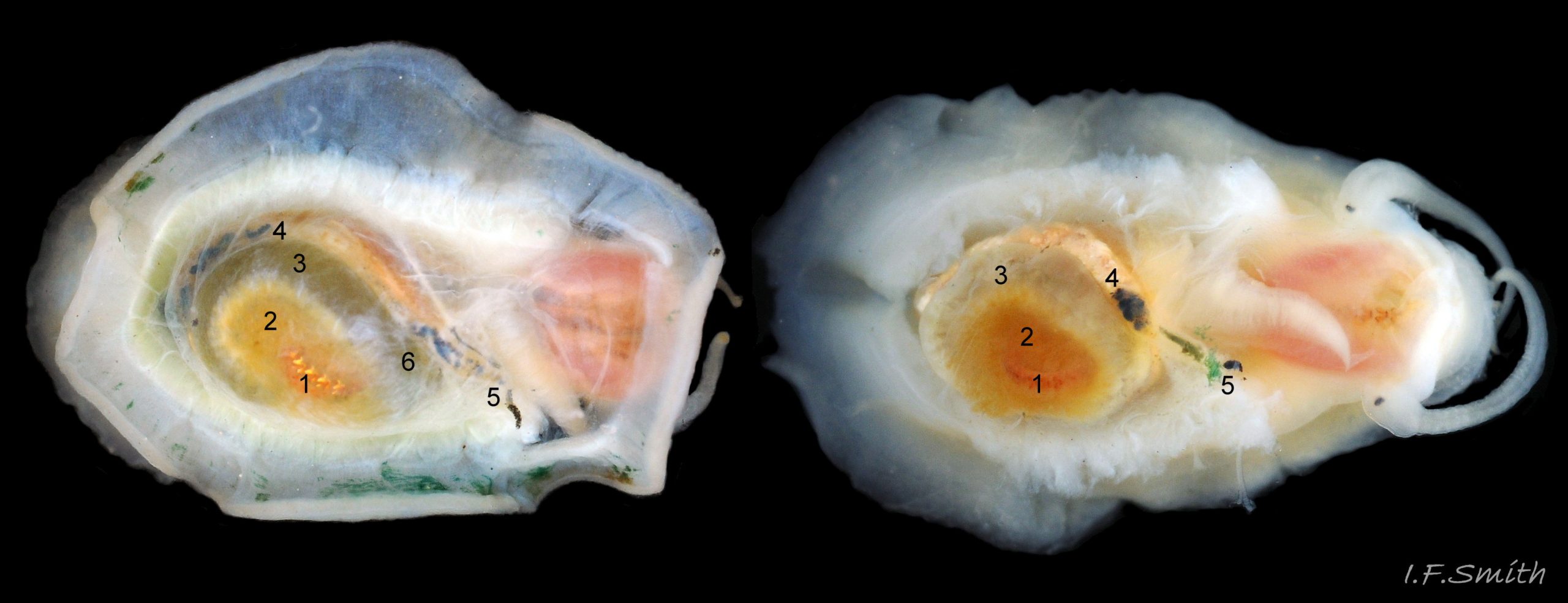Specimens removed from shells 13mm and 13.2mm long.
Left: viewed through transparent mantle with pigment coating scraped off; intact except for small tear in roof of nuchal cavity at 5.
Right: mantle removed.
Behind the buccal cavity, the radular sac is among the viscera, so out of sight in dorsal view of a specimen removed from the shell except for a short section (1) usually visible at the surface of the digestive gland.
The digestive gland (2) , composed of a mass of tubules, opens into the stomach through a duct. Digestive cells in the tubules ingest particulate food to digest it intracellularly (Fretter & Graham, 1994, p. 219). The tubules extend into the blood filling the haemocoel, and their very thin covering of connective tissue allows the passage of nutrients into the blood. Undigested material passes into the long coiled intestine (3) where it is compressed and bound with mucus to prevent fouling of the ctenidium. The faecal string passes through the rectum (4) to emerge from the anus (5) at the rear right of the nuchal cavity and, with particulate matter removed by cilia from the inhalant water, is conveyed along the pallial groove by cilia, helped by the flow of exhalant water, to be expelled from the mid-point of the posterior of the shell. The large right nephridium (kidney) is attached to the inner surface of the mantle but often difficult to distinguish (6) when, as in the left specimen, it is the colourless or the same colour as the viscera below it, and it is lost when the mantle is removed.
APPENDIX re range advance/retreat: flic.kr/p/2jW74ig

